Gumroad and Shopify are two popular platforms for selling products online — but which one is right for your business?
To find out, I compared both tools across pricing, ease of use, design, features, and support.
After reviewing them in detail, Shopify comes out on top for anyone building a serious ecommerce store or print-on-demand brand.
Gumroad is best for creators selling digital products in a simple way, but it lacks the scalability and integrations needed for physical product sales.
Gumroad vs Shopify: Quick Verdict
Shopify – Best overall for ecommerce and print-on-demand businesses
Gumroad – Best for simple digital product sales
This article was updated on 08/02/2025.
Here’s what you need to know about each platform and where they shine.
Quick Comparison: Gumroad vs Shopify
This table gives a high-level overview of both platforms and what they offer:
| Feature | Gumroad | Shopify |
|---|---|---|
| Best For | Selling digital products quickly | Building a scalable ecommerce brand |
| Print-on-Demand | No native support | Extensive app integrations |
| Custom Domain | Not supported | Included |
| Blogging & SEO | None | Full CMS |
| Product Types | Digital only | Digital + physical |
| Transaction Fees | 10% | 2.9% + $0.30 (via Shopify Payments) |
| Monthly Pricing | $0 | From $39/month |
| App Store | None | 8,000+ apps |
| Templates | Basic | Customizable themes |
| Customer Support | Email only | 24/7 chat + phone |
| Best For Beginners? | Yes | Yes |
| Best for Growth? | No | Yes |
Best for Pricing: Shopify

If you’re looking for a platform that doesn’t charge upfront, Gumroad stands out. It’s free to use, but it charges a flat 10% transaction fee on every sale.
That makes it ideal for creators with lower sales volume or those testing product ideas. If you’re looking to scale, then Shopify is the best option.
Gumroad’s Pricing Model:
- No subscription fee
- 10% transaction fee (Gumroad takes this off the top)
- No charges for uploading products or building your profile
Shopify’s Pricing Plans:
| Plan | Monthly Cost | Transaction Fees (Shopify Payments) |
|---|---|---|
| Basic | $39/month | 2.9% + $0.30 |
| Shopify | $105/month | 2.6% + $0.30 |
| Advanced | $399/month | 2.4% + $0.30 |
You can save by paying annually, and Shopify also offers a $1 for the first 3 months deal for new users.
While Shopify does cost more upfront, the lower fees per sale often make it the better value as you grow.
That said, the pricing decision really comes down to your business model.
If you’re selling lower-ticket digital goods with minimal overhead, Gumroad’s flat structure might work in your favor.
But once your sales volume increases or you need physical product support, Shopify’s pricing structure becomes more scalable and margin-friendly.
Verdict:
- Gumroad wins on price for creators getting started
- Shopify becomes more cost-effective as your store scales
Best for Selling Products: Shopify
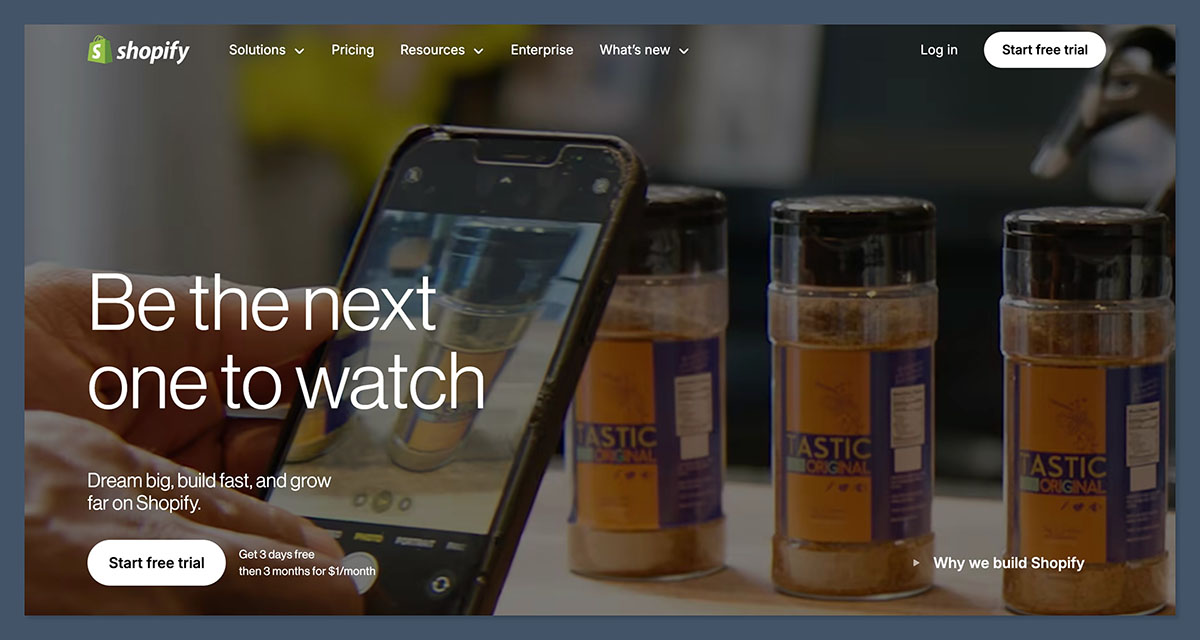
Whether you’re building a print-on-demand clothing brand or managing a full online store, Shopify offers more robust selling tools.
It supports physical and digital products, integrates with print-on-demand providers, and offers advanced sales features out of the box.
Key Shopify Selling Features:
- Sell on Instagram, Facebook, Amazon, and TikTok
- Abandoned cart recovery
- Discount codes and coupon creation
- Product variants and collections
- Automated tax calculation and shipping rates
Gumroad’s Selling Tools:
- Sell digital products like ebooks, videos, templates, or licenses
- Offer subscriptions or membership pricing
- Create license keys or PDF stamping for piracy protection
Gumroad is simple and clean — but it’s not built for physical product logistics or scale.
Beyond features, the big difference is ownership and flexibility.
With Shopify, you control your storefront, pricing rules, checkout experience, and product hierarchy.
Gumroad keeps you boxed into a creator-style format where customization is minimal, and features are simplified to the essentials.
Verdict:
- Shopify is clearly better for ecommerce and print-on-demand
- Gumroad works well for a small digital product catalog
Best for Print-on-Demand: Shopify
If you’re planning to use print-on-demand, Shopify is the only viable option here. It integrates with every major POD service.
Shopify Print-on-Demand Apps:
- Printful
- Printify
- SPOD
- Teelaunch
- Apliiq
- Gooten
These platforms let you upload your designs, set profit margins, and automatically fulfill customer orders — all synced with Shopify.
Gumroad doesn’t offer any built-in print-on-demand support. To sell a t-shirt, you’d need to manually process orders or build a workaround using Zapier, which is inefficient and risky.
Print-on-demand sellers also benefit from Shopify’s shipping calculators, branding options, and automated fulfillment pipelines — all things Gumroad lacks entirely.
With Shopify, you’re not just selling POD products — you’re building a real storefront experience.
Verdict:
- Shopify wins hands down for print-on-demand
- Gumroad doesn’t support POD natively
Best for Website Design: Shopify
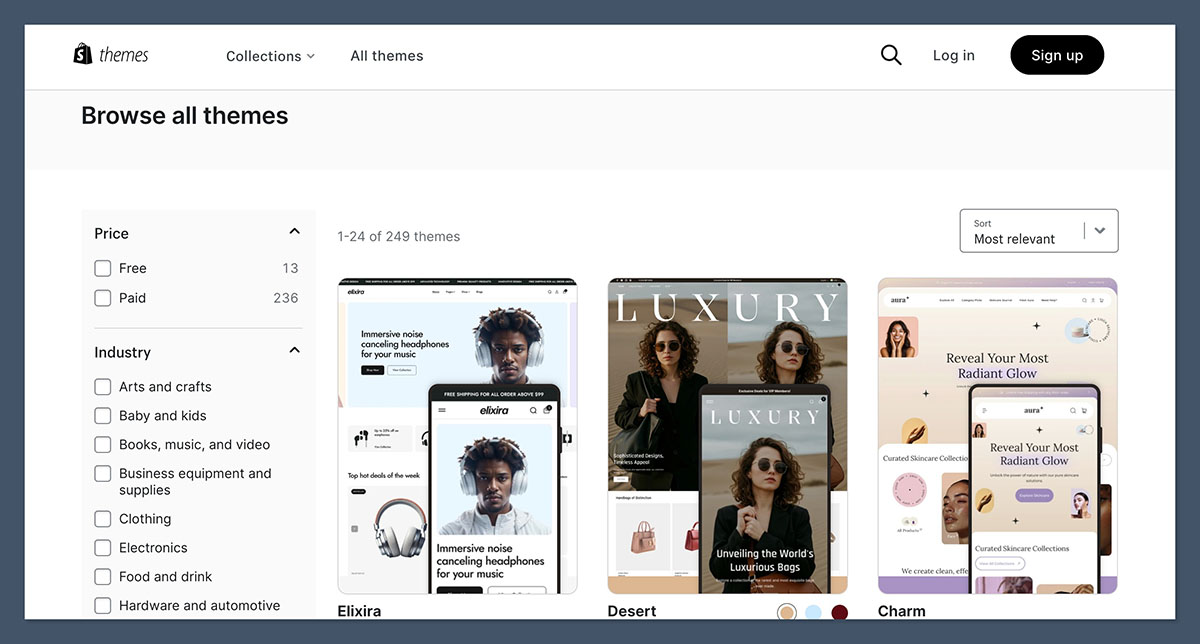
Shopify is a professional website builder with over 190 themes, a visual editor, and the ability to use your own domain.
Shopify Design Features:
- 13 free themes + 180+ premium options ($100–$500)
- Mobile-optimized designs
- Theme editor for layout customization
- Control over colors, fonts, and sections
- Add custom pages, menus, banners, and more
Gumroad doesn’t offer templates or custom website design. You can build a basic profile page and product pages, but the design options are extremely limited.
The ability to build a recognizable, branded experience is where Shopify shines.
Whether you’re running a minimalist print shop or a detailed product catalog, Shopify lets you tailor the layout to reflect your business. Gumroad users are restricted to a single-page style with few branding elements.
Verdict:
- Shopify offers full control over design and branding
- Gumroad is limited to very basic customization
Best for SEO and Content Marketing: Shopify
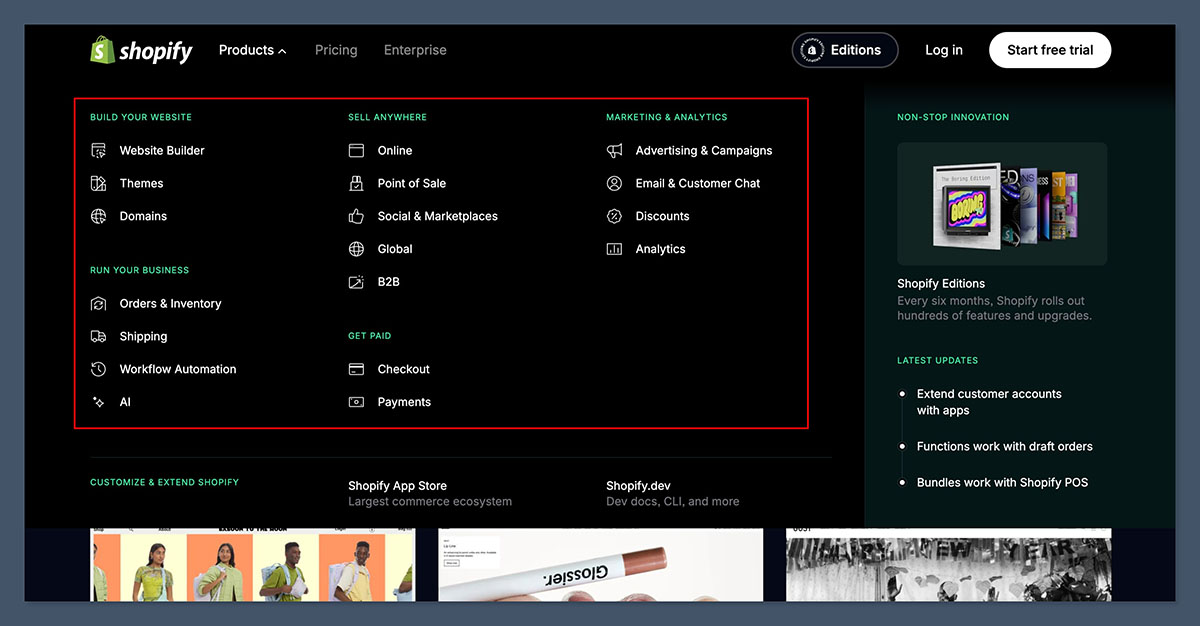
When it comes to building long-term traffic and visibility, Shopify offers far more tools for SEO and content marketing.
Shopify SEO Features:
- Custom meta titles and descriptions
- Clean URL structure
- Blog support with built-in CMS
- Automatic sitemaps
- Integration with SEO tools like Yoast, Semrush, and Ahrefs
You can also install marketing tools like Klaviyo, Mailchimp, and Omnisend for newsletters and email funnels.
Gumroad has no blogging feature or SEO controls. You’re relying entirely on paid traffic or your social following.
SEO isn’t just about ranking — it’s also about trust and authority.
Shopify gives you the tools to consistently publish blog content, structure product pages properly, and build out a content funnel.
With Gumroad, you’re essentially invisible on search unless you’re driving traffic from external channels.
Verdict:
- Shopify is far more SEO-friendly and supports organic growth
- Gumroad is not designed for content marketing or traffic building
Best for Payments and Payouts: Tie
Both platforms support major payment methods like credit cards and PayPal — but the payout process and fees are different.
Gumroad Payments:
- Accepts PayPal and cards via Stripe
- Gumroad collects payments and pays you out weekly
- 10% fee applies to all sales
- No access to the customer’s payment gateway
Shopify Payments:
- Use Shopify Payments or connect Stripe/PayPal directly
- Faster payouts (as soon as 2 days)
- Lower transaction fees that scale with your plan
- Full control over payment processors and merchant settings
While Gumroad is easier to set up, Shopify gives you more flexibility and better margins.
For international sellers or businesses dealing with multiple currencies, Shopify’s payment options are also more diverse.
You can offer local gateways, split payments, and track conversions across various platforms — none of which are possible with Gumroad’s limited checkout flow.
Verdict:
- Shopify offers faster payouts and lower fees at scale
- Gumroad is simpler for first-time sellers
Best for App Integrations: Shopify

Shopify has a massive app marketplace with over 8,000+ integrations, covering everything from upsells to reviews to accounting.
Popular Apps Include:
- Oberlo (dropshipping)
- Klaviyo (email)
- ReConvert (post-purchase upsells)
- Plug in SEO
- Judge.me (product reviews)
Gumroad has no app store or native integrations beyond Zapier. This makes it hard to expand your store’s functionality as your business grows.
Apps are what make Shopify scalable. Whether you’re integrating shipping software, custom reviews, or AI-driven upsells, the app store turns your store into a flexible engine for revenue.
With Gumroad, there’s no ecosystem — what you see is what you get.
Verdict:
- Shopify gives you access to powerful tools through apps
- Gumroad is limited to the features built into the platform
Best for Ease of Use: Gumroad
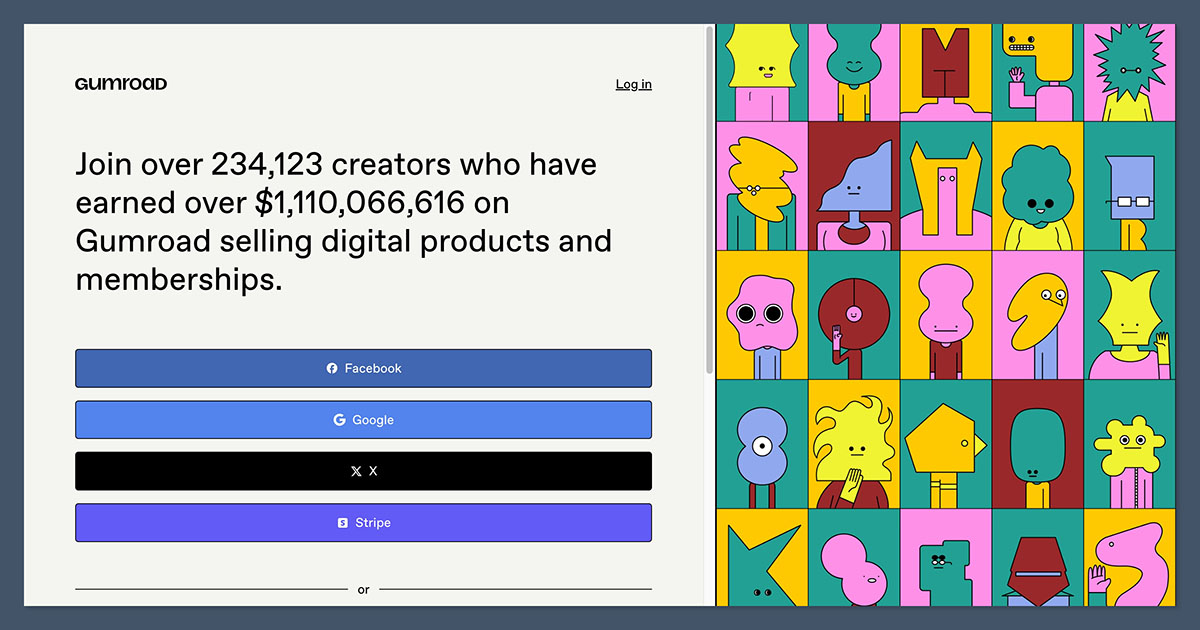
If you’re looking to get up and running in under 30 minutes, Gumroad is hard to beat. It’s intentionally simple.
Gumroad Pros:
- No setup required — just upload and publish
- Minimal interface with clear navigation
- No coding or design needed
- Ideal for creators launching one product fast
Shopify Usability:
Shopify is still easy to use — it has a guided onboarding process and a clean dashboard — but there’s a steeper learning curve because of the advanced features and customization options.
If you’re a beginner selling one product, Shopify can feel like overkill.
The trade-off here is control versus simplicity. Shopify gives you more power and features, but it can take longer to set up.
Gumroad is frictionless, but that simplicity also limits you when you’re ready to expand or diversify your product line.
Verdict:
- Gumroad wins for simplicity and speed
- Shopify is still user-friendly but more complex
Best for Customer Support: Shopify
When it comes to support, Shopify provides a full suite of options to help you troubleshoot problems or grow your store.
Shopify Support Options:
- 24/7 live chat
- Phone support (on most plans)
- Email assistance
- Knowledge base, tutorials, and community forums
Gumroad, by contrast, only offers email support and a help center. Support response times can vary and there’s no live chat option.
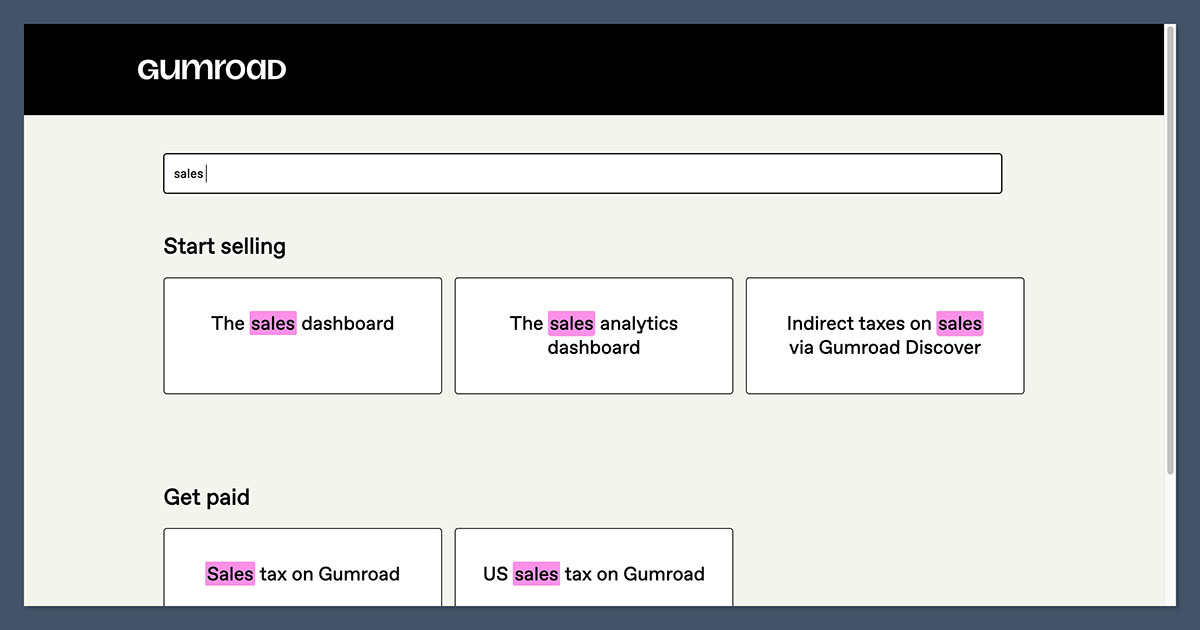
What’s more, Shopify’s extensive documentation, user forums, and third-party YouTube tutorials make it easier to find answers fast.
If you’re scaling a business, access to fast, actionable support becomes critical — and Shopify delivers that at nearly every level.
Verdict:
- Shopify offers more responsive, round-the-clock support
- Gumroad support is more limited
Final Verdict: Shopify Wins for Ecommerce and Growth
| Feature | Winner |
|---|---|
| Pricing | Gumroad |
| Product Selling Features | Shopify |
| Print-on-Demand | Shopify |
| Website Design | Shopify |
| SEO & Marketing | Shopify |
| Payment Options | Tie |
| App Store | Shopify |
| Ease of Use | Gumroad |
| Support | Shopify |
If you’re a creator selling a few digital downloads or testing an idea with minimal risk, Gumroad is simple, fast, and affordable.
But if you’re launching a real ecommerce brand, building a print-on-demand business, or looking to grow through SEO, content, and marketing — Shopify is the better long-term choice.








